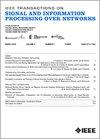Learning General Brain Network Representations of Different Brain Disorders Using Invariant Subgraph GNN
IF 3
3区 计算机科学
Q2 ENGINEERING, ELECTRICAL & ELECTRONIC
IEEE Transactions on Signal and Information Processing over Networks
Pub Date : 2025-02-11
DOI:10.1109/TSIPN.2025.3540709
引用次数: 0
Abstract
Distribution shifts across data from various brain disorders pose significant challenges for diagnosis. Establishing general feature representations that can handle these distribution shifts is crucial for accurately diagnosing these conditions. However, this area remains largely unexplored. This work propose an Invariant Subgraph GNN (IS-GNN) to learn general brain network representations for classifying various brain disorders in resting-state fMRI. This model employs an invariant subgraph learning mechanism to capture invariant brain graphs and handle distribution shifts. Moreover, we have developed an adaptive structure perception module to improve the detection of invariant subgraph features in brain networks by assessing the importance of nodes within the brain graph. To further refine the model, we propose a self-supervised loss for invariant subgraph learning, ensuring the generation of invariant brain network representations. Pretrained on data from 1,943 subjects across three public datasets corresponding to Autism Spectrum Disorder, Attention Deficit Hyperactivity Disorder, and Parkinson's Disease, the fine-tuning experiments of our proposed method demonstrate that the model achieves the state-of-the-art classification performance on not only the three datasets but also on an external Alzheimer's Disease dataset across.利用不变子图 GNN 学习不同脑部疾病的一般脑网络表征
各种脑部疾病数据的分布变化对诊断构成了重大挑战。建立能够处理这些分布变化的一般特征表示对于准确诊断这些条件至关重要。然而,这一地区在很大程度上仍未被开发。这项工作提出了一个不变子图GNN (IS-GNN)来学习一般的大脑网络表征,用于在静息状态fMRI中分类各种大脑疾病。该模型采用不变子图学习机制捕获不变脑图并处理分布移位。此外,我们还开发了一个自适应结构感知模块,通过评估脑图中节点的重要性来改进对脑网络中不变子图特征的检测。为了进一步完善模型,我们提出了一种用于不变子图学习的自监督损失,以确保生成不变的脑网络表示。在自闭症谱系障碍、注意缺陷多动障碍和帕金森病三个公共数据集的1943名受试者的数据上进行预训练,我们提出的方法的微调实验表明,该模型不仅在三个数据集上实现了最先进的分类性能,而且在外部阿尔茨海默病数据集上也实现了最先进的分类性能。
本文章由计算机程序翻译,如有差异,请以英文原文为准。
求助全文
约1分钟内获得全文
求助全文
来源期刊

IEEE Transactions on Signal and Information Processing over Networks
Computer Science-Computer Networks and Communications
CiteScore
5.80
自引率
12.50%
发文量
56
期刊介绍:
The IEEE Transactions on Signal and Information Processing over Networks publishes high-quality papers that extend the classical notions of processing of signals defined over vector spaces (e.g. time and space) to processing of signals and information (data) defined over networks, potentially dynamically varying. In signal processing over networks, the topology of the network may define structural relationships in the data, or may constrain processing of the data. Topics include distributed algorithms for filtering, detection, estimation, adaptation and learning, model selection, data fusion, and diffusion or evolution of information over such networks, and applications of distributed signal processing.
 求助内容:
求助内容: 应助结果提醒方式:
应助结果提醒方式:


